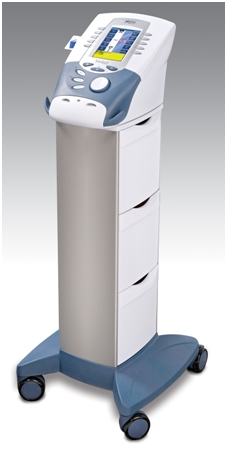Carlingford 98722005
Mobile 0499 020 530
Carlingford 98722005
Mobile 0499 020 530
Interferential therapy (IFT) is one of various types of physical therapy. It uses a mid-frequency electrical signal to treat muscular spasms and strains. The current produces a massaging effect over the affected area at periodic intervals, and this stimulates the secretion of endorphin, the body’s natural pain relievers, thus relaxing strained muscles and promoting soft-tissue healing. Its use is contraindicated if the affected area has wounds, cuts or infections.
The basic principle of IFT is to use physiological effects of low frequency (at
It has been suggested that IFT works in a ‘special way’ because it is ‘interferential’ as opposed to ‘normal’ stimulation. The evidence for this special effect is lacking, and it is most likely that IFT is just another means of stimulating peripheral nerves. It is rather a generic means of stimulation. The machine can be set up to act more like a TENS-type device or a muscle stimulator by adjusting the stimulating (beat) frequency. Some patients regard it as more acceptable, as it generates less discomfort than some other forms of electrical stimulation.
IFT is used in four clinical applications, to:
 Surface Electromyography (sEMG) is an electrodiagnostic medicine technique for evaluating and recording the electrical activity produced by muscles. It is a non-invasive technique for measuring muscle electrical activity that occurs during muscle contraction and relaxation cycles.
Surface Electromyography (sEMG) is an electrodiagnostic medicine technique for evaluating and recording the electrical activity produced by muscles. It is a non-invasive technique for measuring muscle electrical activity that occurs during muscle contraction and relaxation cycles.
sEMG is performed using an instrument called SurfaceElectromyograph to produce a record called an electromyogram. An Electromyograph detects the electric potential generated by muscle cells when these cells are electrically or neurologically activated. The signals can be analysed to detect medical abnormalities, activation level, or recruitment order, or to analyse the biomechanics of human movement.sEMG is clinically used for Biofeedback, Muscle and Nerve disorders, Sports Injuries etc.